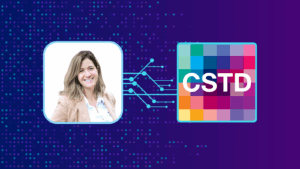As African countries accelerate the deployment of Digital Public Infrastructure (DPI), the essential, interoperable digital systems that enable public and private services at scale, trust is emerging as the cornerstone of sustainable implementation.4 DPI systems, which include digital identity, payment platforms, and data exchange mechanisms, hold transformative potential for governance, social inclusion, and economic growth. Yet, despite the promise, building citizen trust in DPI remains a complex, context-dependent challenge.
Historical mistrust, gaps in digital literacy, and recurring privacy violations,5 especially among marginalized communities, pose serious risks to adoption. A 2023 survey by the Center for Financial Inclusion (CFI) highlights a recurring pattern: citizens often view DPI initiatives as opaque and top-down, especially when public participation is weak or absent.6
Generally, data on citizen experiences and material impact of DPI remain limited, outside a handful of exemplar countries. This raises important questions around how harms can be mitigated, trust restored, and meaningful collaboration achieved across government agencies, the private sector, civil society, and other stakeholders. One tool the Datasphere Initiative has been exploring is sandboxes and this blog shares why they offer a promising, trust-building pathway.
Sandboxes provide controlled, time-bound testing environments where governments, developers, and other stakeholders can collaboratively explore innovations, regulatory frameworks, and societal impacts before full-scale deployment. Unlike theoretical consultations or rigid pilot projects, sandboxes emphasize real-world use cases, iterative learning, and cross-sectoral engagement.
See examples of how sandboxes are being used for AI governance in this report and how these regulatory and operational tools are being leveraged in Africa.
- Sandboxes move collaboration from theory to practice
Everyone talks about collaboration, but sandboxes make it tangible. Sandboxes offer a structured space where government entities, civil society organizations, technologists, and private companies test interoperability, values alignment, and co-design in action, ensuring each actor’s agency, decisionmaking power and contributions are respected.
Take Kenya’s rollout of the Maisha Namba digital ID. Civil society organizations quickly flagged major issues, many echoing the failures of the earlier Huduma Namba system.7 The concerns included: design flaws that could lead to exclusion, especially of marginalized and minority communities; unresolved issues in existing citizenship processes; and a lack of transparency, legal safeguards, or meaningful public participation.8 Additionally, the decision to issue only Maisha Cards for new IDs before resolving key legal, technical, and human rights concerns was criticized by human rights groups for bypassing public engagement.9
Once again, people were being asked to trust a system they had no say in, and that history had taught them to question. Designed in an inclusive manner, a sandbox approach could have helped mitigate policy missteps and offered the government a way to test the system with vulnerable groups, refugees, stateless persons, and rural communities, to co-create solutions for concrete challenges with those affected, before national deployment.
Additionally, a sandbox approach designed to include civil society actors offers a powerful tool to scrutinize risks, advocate for human rights protections, ensure that emerging technologies align with public values and guarantee that underserved and underrepresented communities’ perspectives are heard.10 Such meaningful engagement is not automatic, but requires intentional design choices.11
- Sandboxes identify risks and opportunities
Rather than reacting to problems after they occur, sandboxes allow governments and key stakeholders to proactively spot potential harms and blind spots. From privacy risks to exclusion errors, it is key to identify and address risks, as well as enhance opportunities before scaling up. Take for instance, Nigeria’s rollout of the eNaira. In October 2021, the Central Bank of Nigeria launched the digital currency with big promises: a modernized payment system that would drive financial inclusion,12 especially among the country’s tech-savvy youth. But despite high mobile connectivity and a massive potential user base, the results were underwhelming. By mid-2023, an IMF report showed that less than 0.5% of Nigerians had adopted the eNaira, and a staggering 98.5% of wallets were inactive.13 By 2024, the buzz had faded, and the project was at best an obsolete invention.14
Many users felt the eNaira’s built-in anti-money laundering features crossed the line into surveillance. A Cornell University blog noted concerns about government overreach, with users uneasy about every transaction being monitored.15
These privacy red flags, along with usability issues, could have surfaced much earlier, if the government had tested the system in a sandbox with youth groups, fintech startups, and small businesses. Instead, what could have been a game-changing innovation became a cautionary tale. A sandbox wouldn’t have guaranteed success — but it would have opened the door for feedback, adaptation, and trust-building, which in the era of digital transformation, is often the difference between bold innovation and a forgotten app.
- Sandboxes test technology and government practices
Technical fixes alone can’t solve systemic issues. Sandboxes help align regulatory frameworks, technical architectures, and user needs, ensuring DPI is grounded in real use cases, not just theory. One of the key needs of DPI is to ensure user-friendliness, and sandboxes can be key safe spaces to run platforms and solutions by a diverse pool of end users.
Uganda’s UGHub, a DPI platform built on open-source technologies to enable cross-government data integration.16 While promising in scope, success depends on ensuring user consent, transparency, and clarity of data-sharing protocols. A sandbox could simulate real-use scenarios, like a citizen applying for a land title, allowing stakeholders to observe data flow, assess consent mechanisms, and validate security features in practice.
Conclusion – DPI moves at the speed of trust and sandboxes can be its accelerator
In a world increasingly governed by data and digital systems, trust is not earned by declarations — it’s built through participation, transparency, and responsiveness. DPIs will only move as quickly to meaningful impact as trust built in these systems. Sandboxes are agile by design, allowing iterative improvements and adaptation over time as lessons on what does and does not work emerge. By embedding sandboxes in DPI development strategies, African governments can create environments where trust-building is accelerated and innovation, inclusion and responsibility go hand in hand.
4Nduva V., Murenzi D. (2024), Safe and secure digital public infrastructure is crucial for Africa. Here’s why, digital.global
5Nduva V., Murenzi D. (2024), Safe and secure digital public infrastructure is crucial for Africa. Here’s why, digital.global
6 Zollmann J., Sambuli N., Wanjala C. (2024), Citizen Experiences with DPI: Kenya’s Digital ID Transition, Center for Financial Inclusion.
7 CSOs (2024), Government shouldn’t force flawed digital ID system on Kenya, Kenya Human Rights Commission.
8 CSOs (2024), Government shouldn’t force flawed digital ID system on Kenya, Kenya Human Rights Commission.
9 CSOs (2024), Government shouldn’t force flawed digital ID system on Kenya, Kenya Human Rights Commission.
10 Datasphere Initiative (2025). Sandboxes for AI: Tools for a new frontier. https://www.thedatasphere.org
11 Datasphere Initiative (2025). Sandboxes for AI: Tools for a new frontier. https://www.thedatasphere.org
12 Ishaya P. (2025), From $10 Million Transactions to Zero: What Lessons Can Be Learned from eNaira’s Failure, Social Voices.
13 Hinchliffe T. (2025), Nigeria outlines cradle-to-grave DPI, digital ID scheme for all citizen ‘life events’, The Sociable
14 Ishaya P. (2025), From $10 Million Transactions to Zero: What Lessons Can Be Learned from eNaira’s Failure, Social Voices.
15 Ishaya P. (2025), From $10 Million Transactions to Zero: What Lessons Can Be Learned from eNaira’s Failure, Social Voices.
16 National Identification and Registration Authority-Uganda (n.d), A Collaborative Approach to Digital Identity & Digital Transformation, ID4Africa.








